Hello, today we’re chatting about all things Bakewell tart. On the surface these tarts seem quite simple: buttery pastry, a layer of jam and nutty frangipane, but there’s more to them than meets the eye. We’re going to look at different baking methods, how to customise them, and I have a recipe for both large and small tarts.
Although this post is focused on classic Bakewell tarts, all of these principles can be applied to any frangipane tart. The point of this post is to give you the foundations to feel confident enough to experiment and have fun with different flavours! If you’re looking for something a bit more adventurous, I already have quite a few frangipane-based recipes which you can find here: Pear, Ginger & Date Tart, Rhubarb, Pistachio & Cardamom Tarts, Cherry & Coconut Bakewells.
Most of these recipes are exclusively available for paid subscribers, so if that sounds like something you’re into, please consider becoming a paid subscriber. You’ll receive an exclusive recipe every week, plus access to the full archive of over 100 thoroughly tested cake and dessert recipes. And you'll be helping support me so I can continue creating and sharing recipes! 🩷
It’s just £5 a month or £50 for a whole year. To subscribe or upgrade, just hit the button below and join me for more cakey fun.
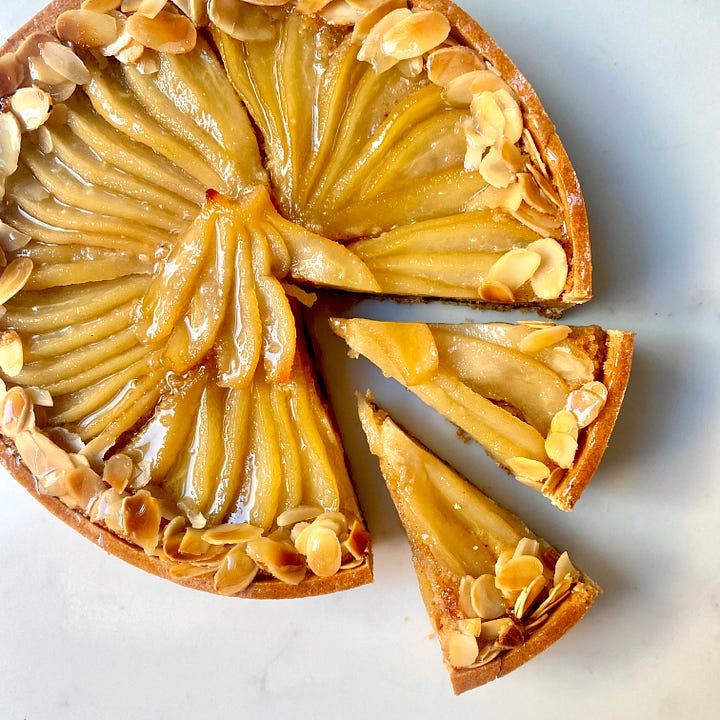
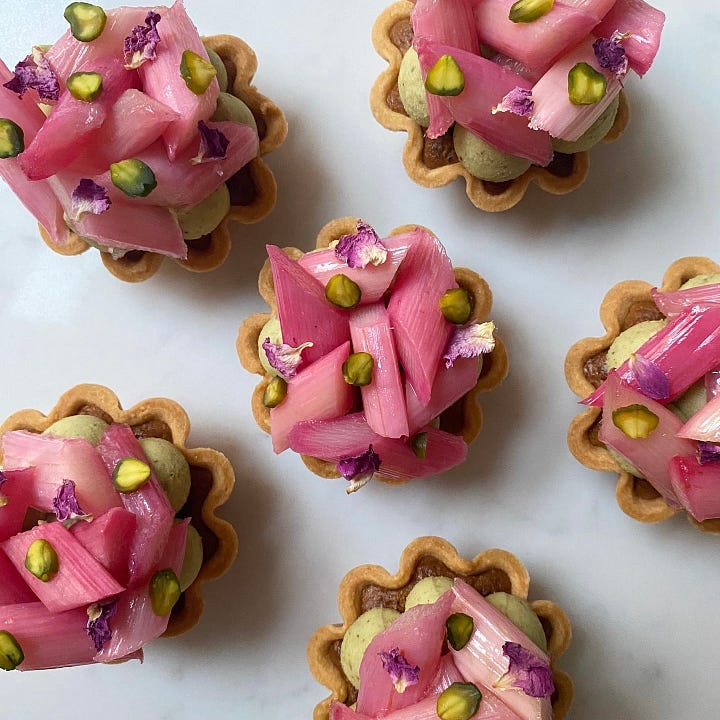

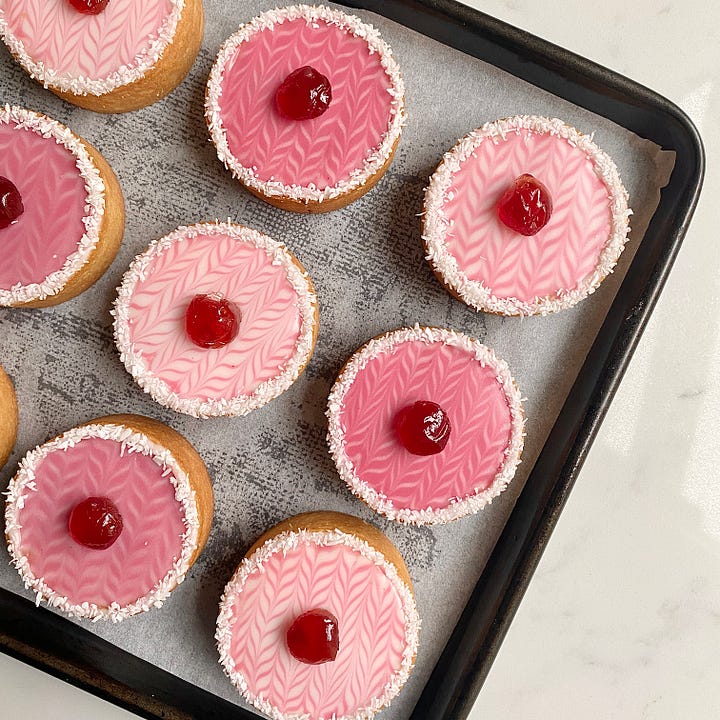
Ok, let’s chat all things Bakewell…
The Pastry
To keep things simple, I’m using my sweet pastry for all of my tests. You can use any pastry you like, but for a classic Bakewell tart I think this sweet pastry works really well. It’s buttery, easy to work with and you can re-roll it to your heart’s content!
As ever, the lining and blind baking are really important if you want a nice, even tart. I’ve already covered lining and blind baking extensively in Blind Baking 1 & Blind Baking 2.
To Blind Bake Or Not To Blind Bake?
Whether or not to blind bake your pastry case before adding the frangipane is probably the biggest question when it comes to frangipane tarts, and unfortunately the answer isn’t that simple. Different bakers and pastry chefs all seem to have their own opinions, and the type of oven you’re using plays a big part here. If you have an oven with very strong heat on the bottom, like a deck oven, you can probably get away without blind baking your pastry case (even a large one). But since very few of us have access to professional ovens, let’s look at our options when it comes to regular home ovens.
My general rule when it comes to blind baking is that large tarts need to be blind baked, but you don’t need to bother with smaller tarts. However, this leaves us with the philosophical question of: at what point does a small tart become a large tart?
This question gave me a good excuse to crack out every single tart tin in my possession (which is a considerable number) to see at what point the base would become soggy without blind baking. As you can see from the picture above, all of the smaller tarts worked pretty well. However, the largest one I tested had patches of undercooked pastry on the bottom. It’s worth noting that the largest tin I tested is a bit of an odd size (about 12cm in diameter) and not one you’d typically find in a home kitchen. So let’s discount that and just say any standard-size individual tart tin should work fine without blind baking. Although, if you want an extra crisp base, there’s no harm in blind baking – personally, I’m just too lazy.
When it comes to larger tarts (anything above 10cm), blind baking is essential to ensure a nice, crisp bottom. To get the base of my tarts even crisper, I also experimented with baking directly on a preheated pizza stone. I had high hopes for this, but the results were negligible – it’s not worth the effort of lugging a pizza stone around.
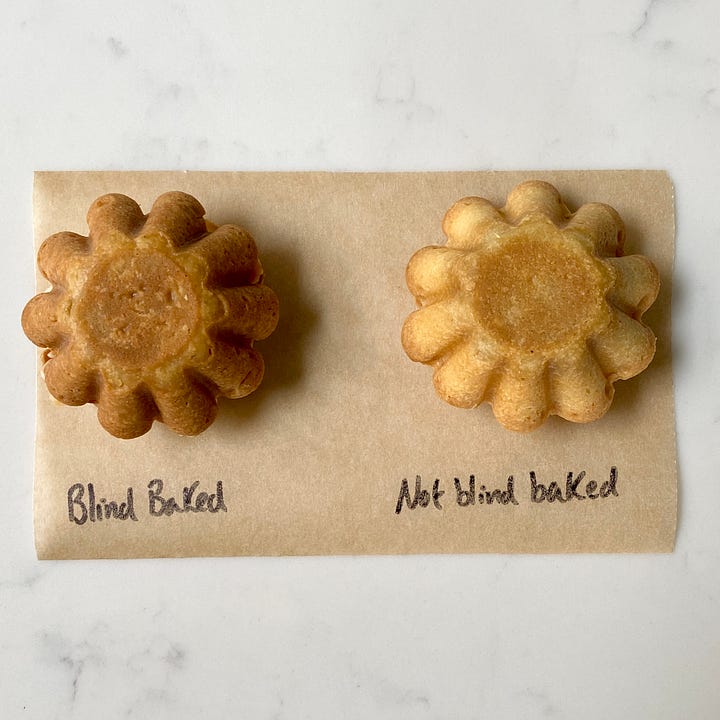
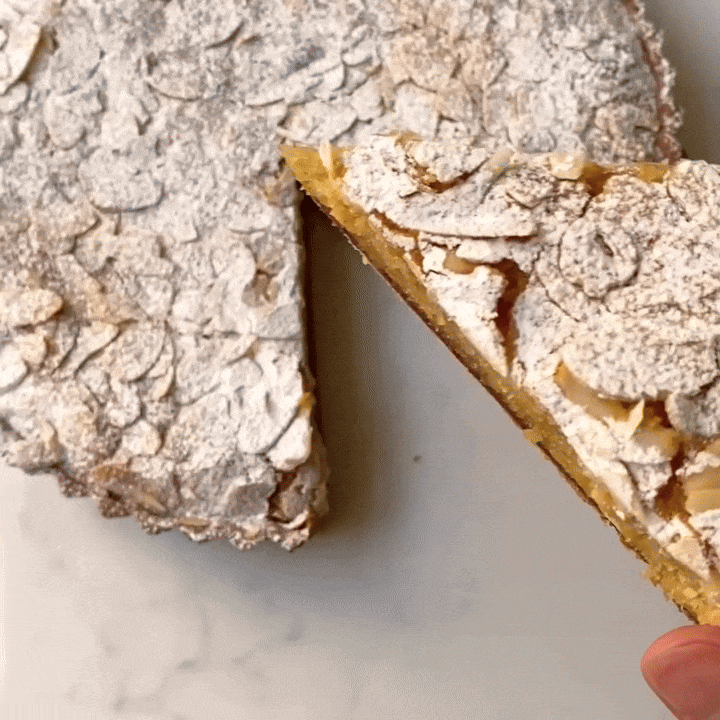
The Frangipane
Most frangipane recipes follow the same basic ratio of one part butter, one part sugar, one part eggs and one part ground almonds. This is a classic combination that doesn’t really need to be messed with, however, for the sake of research, I did indeed mess with it.
The changes I made to the frangipane were fairly minimal. The first was to add a little flour, you don’t have to add flour, but I find it helps with the rise of the frangipane, especially in small tarts. It stabilises the frangipane and stops it from spilling over the edges, giving you a nice domed top. I add around 20% of the weight of the almonds, so if the recipe calls for 100g of almonds, I’d add 20g of flour.
The second thing I wanted to experiment with was replacing the eggs with just yolks or just whites. I always seem to have extra egg yolks or whites that need to be used up, so I wanted to see what would happen if I used them in my frangipane. Both the whites and the yolks worked reasonably well. The yolks were definitely superior in terms of flavour, while the frangipane made with egg whites worked but was a little bit bland. I probably wouldn’t make a frangipane with just whites or just yolks again, but if you have some hanging around that need to be used up, you can go ahead and replace a portion of the egg with either whites or yolks without affecting the overall flavour too much.
You can also mess around with additional flavourings: spices, zest, almond extract and miso all help add extra flavour, or you can swap out the caster sugar for brown sugar and the butter for brown butter. And of course, you can always change up the nuts, which brings us onto…
The Nuts
You can swap out almonds for any ground nuts you fancy! I’ve tried all sorts, from pecans to coconut to ground sesame. They all work really well. I often choose to roast my nuts to enhance the flavour. I tend to roast them at 180°C fan (355°F) for around 20 minutes. This will depend on the nut, but for almonds in particular, I like a nice dark roast, especially if I’m not using almond extract.
Be warned: roasting releases the oils in the nuts, so it’s a good idea to blend and sieve them before roasting to avoid ending up with nut butter rather than toasted ground nuts.
Jams, Curds & Compotes
You can put whatever you like in the base of your tart. In my experience, classic jams work slightly better than compotes if you’re not blind baking, as the water content isn’t as high, so there’s less likelihood of a soggy bottom. However, jams can be very sweet, so try to opt for a more tart jam. If you’re making your own, you can add a touch more citric acid or lemon juice. If you’re using store-bought, make sure it’s a good quality jam and add a squeeze of lemon juice before spreading it in the base of your tart.
If you are blind baking, you don’t need to worry as much about the water content. Use any jam, curd or compote you have to hand. I have a tonne of recipes, all of which can be found here.


The Deal With Adding Fruit
When it comes to adding fruit to your frangipane tart, there are two options: dot a few pieces here and there or arrange finely sliced pieces on top. You can arrange chunkier pieces on top, but they will sink into the frangipane as your tart bakes, and the end result probably won’t be as pretty as you’d hoped.
Many years ago, I worked on a cookbook (I won’t say whose) that included a frangipane tart recipe. The instructions said to arrange the fruit in the tart before baking, and the picture in the book shows the most spectacular tart with the fruit beautifully roasted and standing tall. To get that picture, we faffed around for hours par-baking the frangipane, pre-roasting the fruit, and so on. I’m not really sure what the point of this little anecdote is, other than to say you can’t always trust pictures you see online or in cookbooks. I have messed around endlessly trying to stop my fruit from sinking, and unless you have the world’s thinnest layer of frangipane, a little bit of sinkage is inevitable.
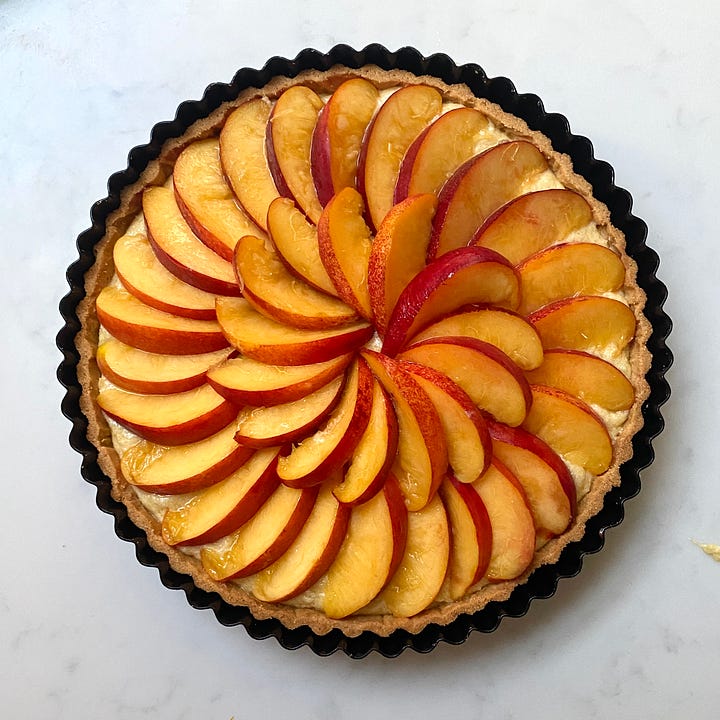
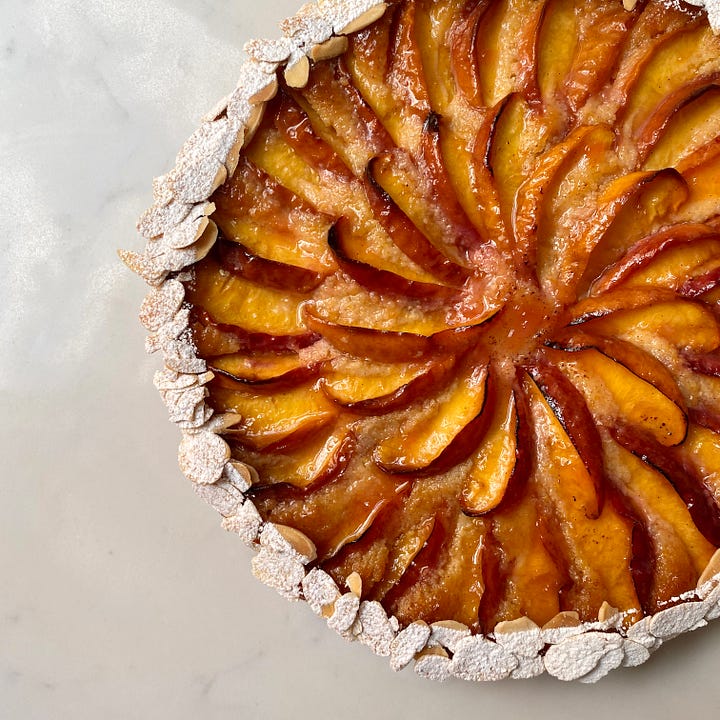
Classic Bakewell Tarts
Ingredients - Makes 1 x. 20cm tart or 15 x individual tarts, I used these tins.
1/2 of a batch of sweet pastry
150g jam
Frangipane
150g ground almonds
150g soft unsalted butter
150g caster sugar
150g egg (about 3 medium eggs)
30g plain flour
1/4 tsp salt
2 tsp almond extract (optional)
100g flaked almonds
Icing sugar to dust
Method - Lining
Roll the pastry to about 2-3mm thick, if you’re working in a warm kitchen, transfer to a baking tray and chill for 10 minutes before lining your tart/tarts.
Line your tarts and trim the excess pastry.
Chill in the fridge or freezer for 20 minutes.
If making a large tart: preheat the oven to 170°C(fan)/340°F.
Line your tart case with baking paper and baking rice and blind bake for 25-30 minutes until the pastry around the edges is completely set and the pastry under the baking rice is starting to firm up.
Remove the baking rice and paper and bake for a further 5-12 minutes until the base of the tart is fully baked, mine took exactly 8 minutes. If you notice any holes in your tart use a little bit of pastry to patch it up.
If the base of your tart is still puffing up even after blind baking, you can use a cake tin to help weigh it down.


Method - Frangipane
Preheat the oven to 180°C fan (355°F) and line a baking tray.
Roast your ground almonds for 20 minutes, turning halfway through.
Set aside to cool.
Cream the butter and sugar until starting to lighten (see pic).
Add the eggs and almond extract (if using) a little at a time, mixing between each addition, the mixture will probably split a little once all of the eggs are in, this isn’t a problem.
Add the almonds, flour and salt and mix until fully combined.
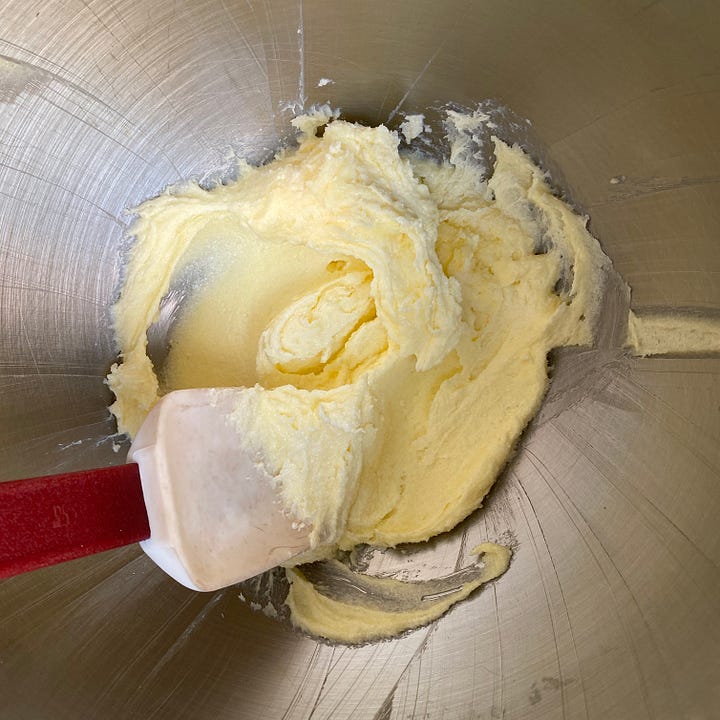

Nicely creamed butter & sugar, split mixture after adding the eggs - this is fine!
Method - Baking - Small Tarts
Preheat the oven to 170°C(fan)/340°F.
Add a dollop of jam to the base of each pastry case, about 8g if you want to be really specific!
Fill to just under the top with frangipane, about 40g in my tart cases.
Top with flaked almonds and bake for 20-30 minutes, in my oven they took exactly 25 minutes.
When you think they’re done, remove them from the oven and turn out one tart to make sure the base is fully baked, if not, return the to the oven for a further 3-5 minutes.
When baked, leave to cool for 5 minutes and then remove them from the tins while still warm.


Method - Baking - Large Tin
Preheat the oven to 170°C(fan)/340°F.
Spread all of the jam out in the bottom of your blind baked pastry case, if your jam is very runny, freeze this for 30 minutes before adding the frangipane on top.
Top with the frangipane and flaked almonds.
Bake for 35-45 minutes until the middle had puffed up and springs back when you press it.
Leave to cool and then dust with icing sugar before serving.
This tart is best eaten fresh but will keep for up to 5 days in an airtight container.

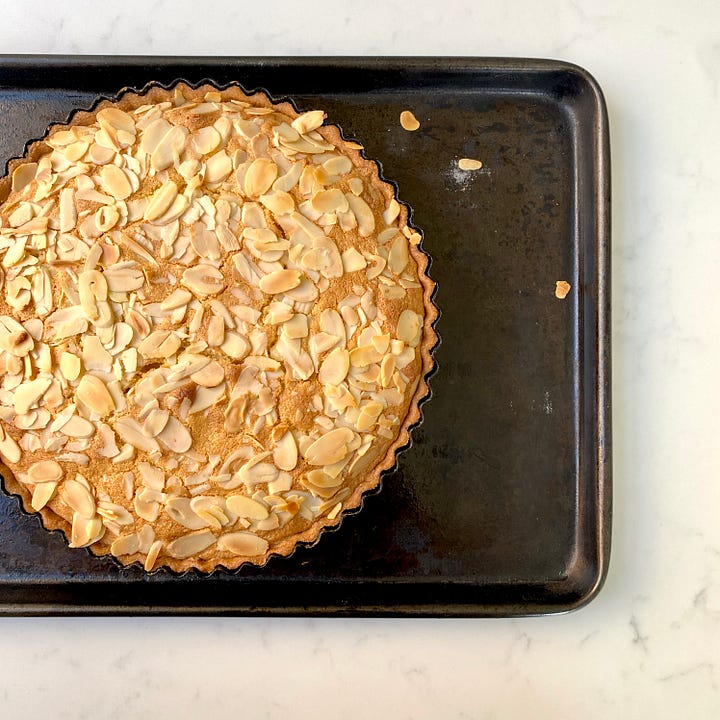
I hope you enjoyed this Bakewell deep dive! If you enjoyed this post or found it useful and want to support me please like, comment or share! It really helps my newsletter to grow so that I can continue to create and share free content without relying on paid ads. Thank you so much! 🩷





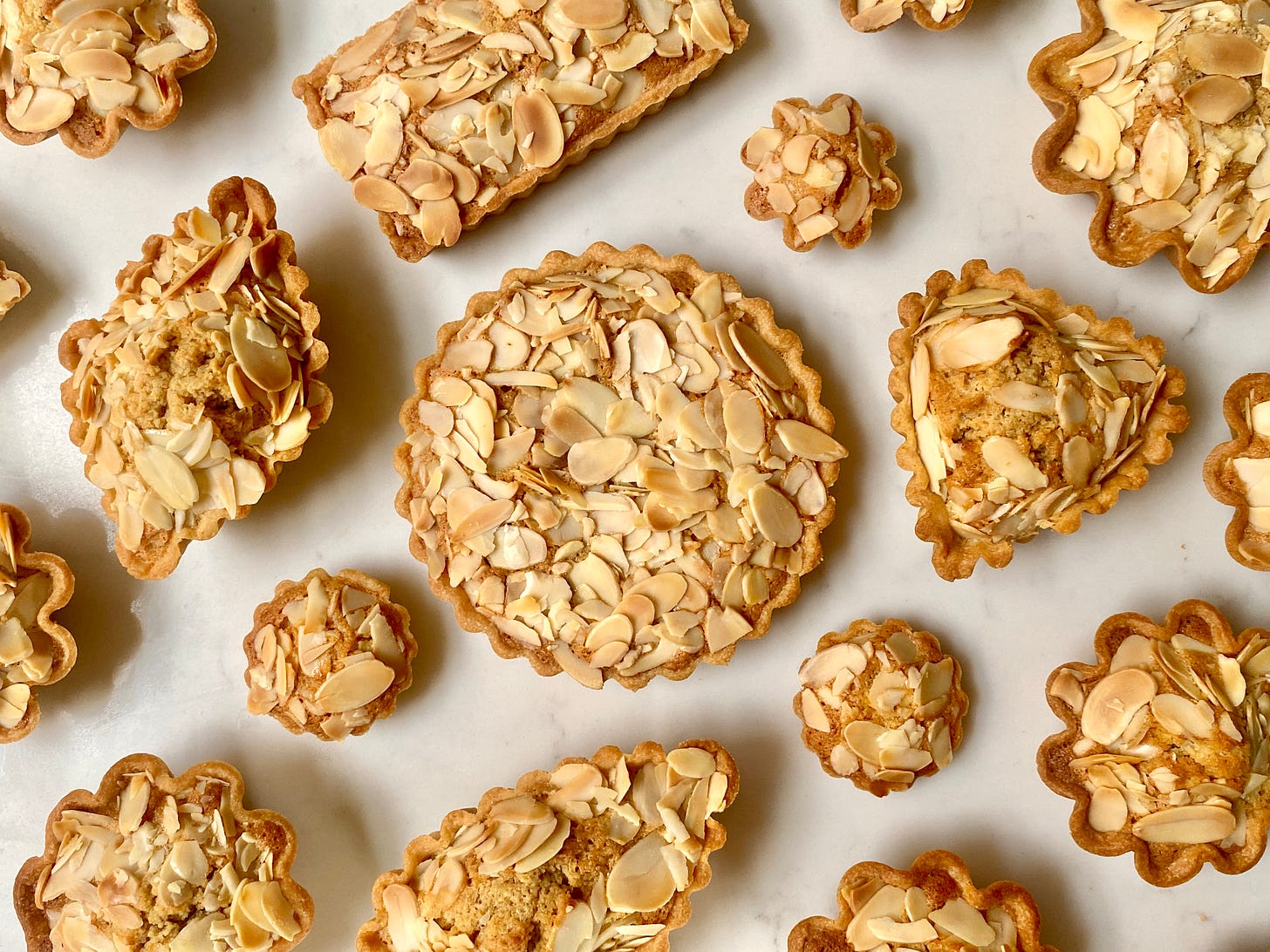
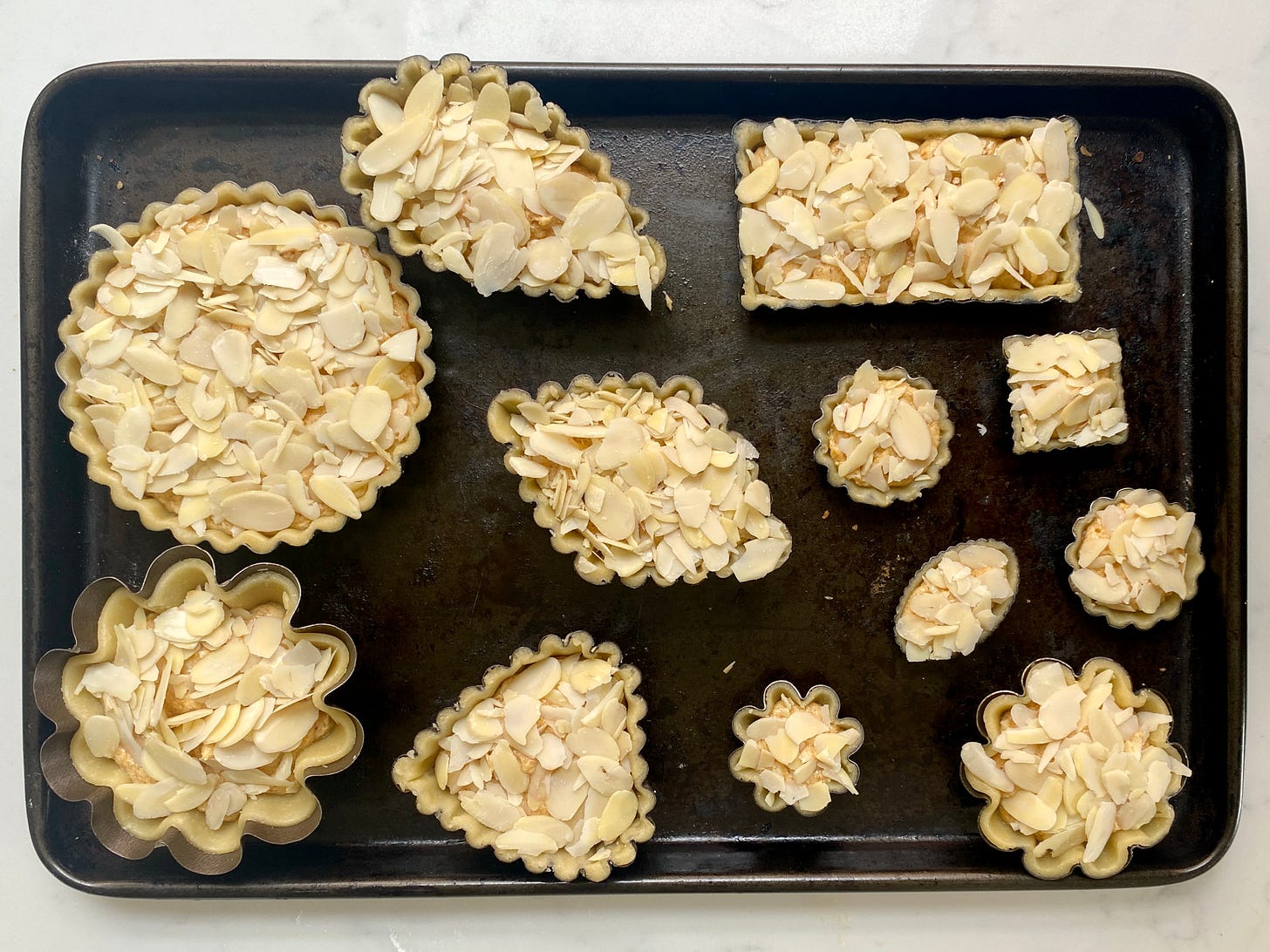

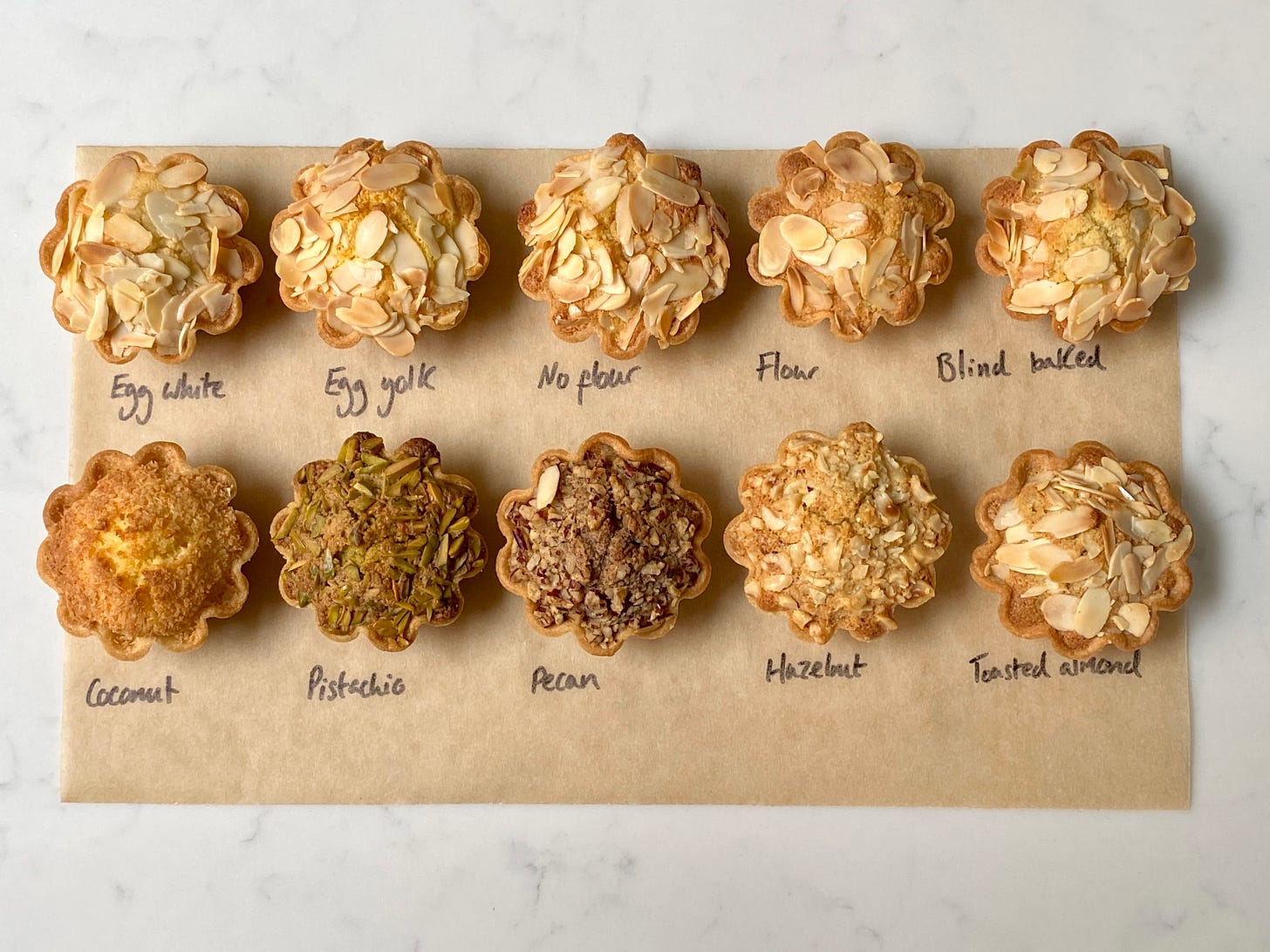
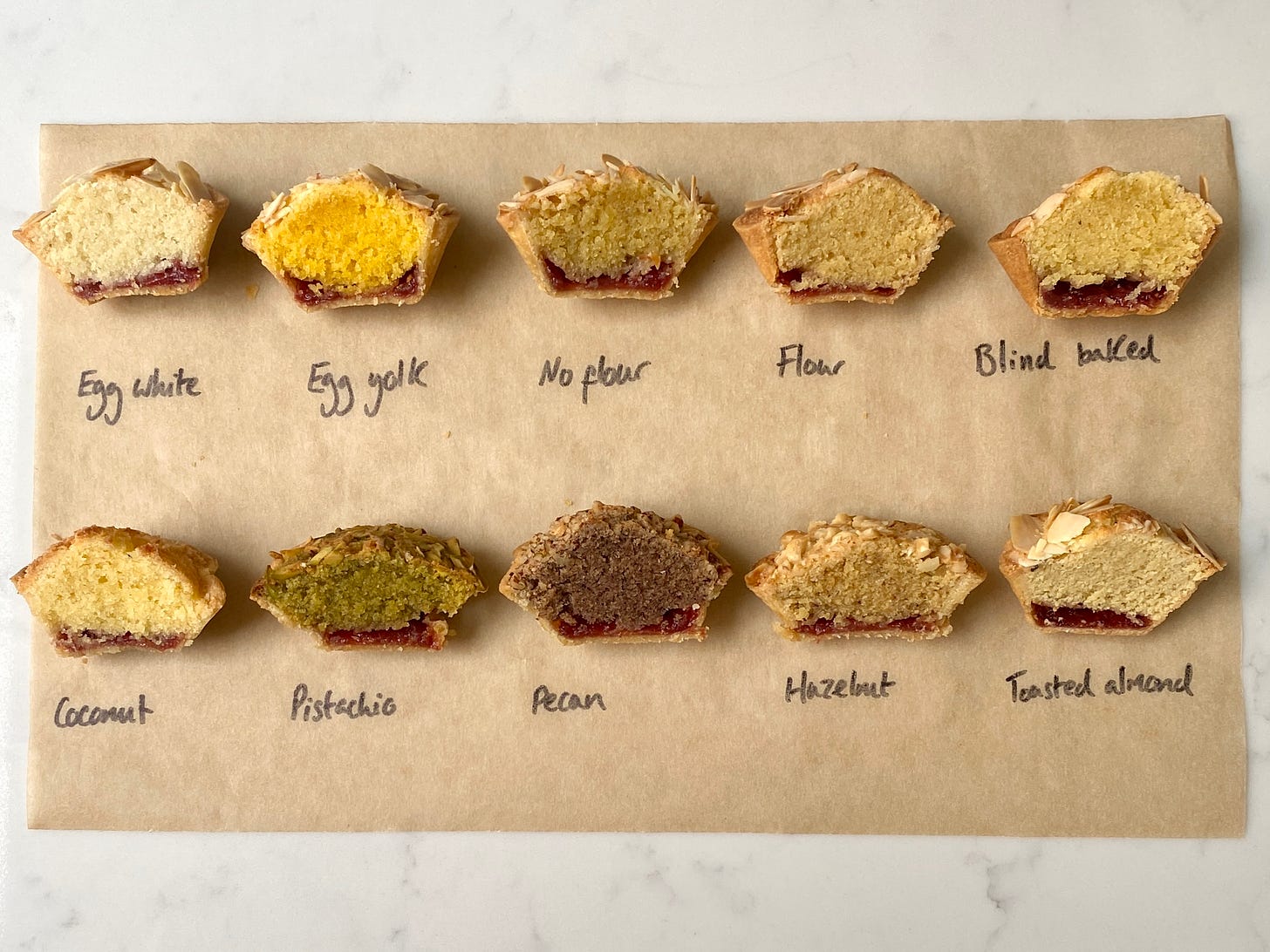
Such an adventure, thankyou!
Thank you for all your hard work and patience!